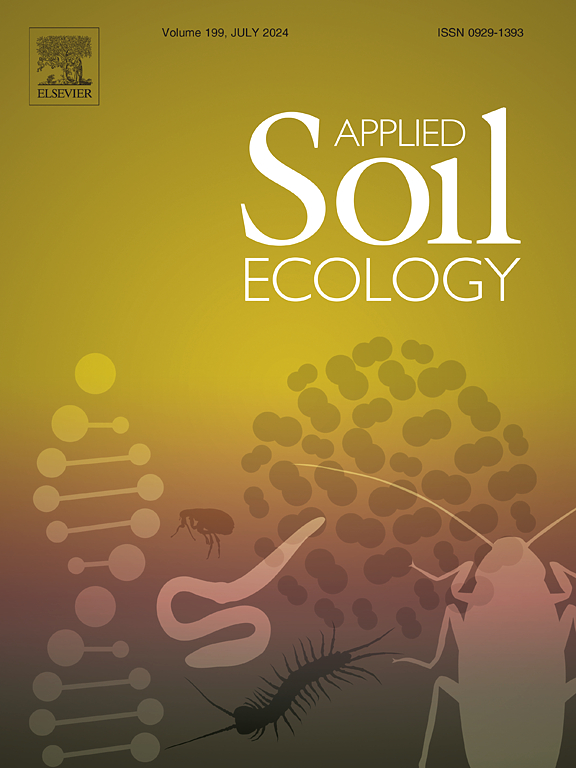Soil nematode diversity depends on understory plant species richness in a subalpine forest
IF 5
2区 农林科学
Q1 SOIL SCIENCE
引用次数: 0
Abstract
As model soil invertebrates, nematodes are the most numerous and functionally diverse multicellular animals in terrestrial ecosystems, having significant effects on plant productivity, soil food web, and organic matter decomposition. While abiotic influences on soil nematode diversity are well known, the effects of biological factors and their interactions remain unclear. Based on combined field surveys with high-throughput sequencing, this study evaluated the impacts of biotic and abiotic factors on soil nematode species richness, Shannon diversity and trophic diversity in a subalpine coniferous forest in Sichuan, China. The results showed that plant diversity and richness exerted a greater influence on the species richness (ranging from 12 to 61) and Shannon index (ranging from 1.0 to 3.5) of soil nematode than abiotic factors (elevation and soil properties). Compared with trees, the species richness and density of understory shrubs and herbs exhibited significant negative correlations with soil nematode diversity. Interestingly, the relative abundances of lower trophic groups were mediated by both plants and higher trophic groups, whereas a bottom-up effect was observed on predators. These findings highlight the vital role of understory shrubs and herbs in shaping the trophic structure and diversity of soil nematode communities in coniferous forests, suggesting that understory diversity should be incorporated into models of soil nematode food webs in forest ecosystems.
土壤线虫的多样性取决于亚高山森林林下植物物种的丰富度
线虫作为土壤模式无脊椎动物,是陆地生态系统中数量最多、功能最多样化的多细胞动物,对植物生产力、土壤食物网和有机物分解具有重要影响。虽然非生物因素对土壤线虫多样性的影响是众所周知的,但生物因素及其相互作用的影响仍不清楚。基于野外调查和高通量测序相结合的方法,研究了生物和非生物因子对四川亚高山针叶林土壤线虫物种丰富度、Shannon多样性和营养多样性的影响。结果表明,植物多样性和丰富度对土壤线虫物种丰富度(12 ~ 61)和Shannon指数(1.0 ~ 3.5)的影响大于非生物因子(海拔高度和土壤性质)。与乔木相比,林下灌木和草本植物的物种丰富度和密度与土壤线虫多样性呈显著负相关。有趣的是,低营养类群的相对丰度是由植物和高营养类群共同介导的,而捕食者的相对丰度则是自下而上的。这些发现强调了林下灌木和草本植物在塑造针叶林土壤线虫群落营养结构和多样性方面的重要作用,表明应将林下植被多样性纳入森林生态系统土壤线虫食物网模型。
本文章由计算机程序翻译,如有差异,请以英文原文为准。
求助全文
约1分钟内获得全文
求助全文
来源期刊

Applied Soil Ecology
农林科学-土壤科学
CiteScore
9.70
自引率
4.20%
发文量
363
审稿时长
5.3 months
期刊介绍:
Applied Soil Ecology addresses the role of soil organisms and their interactions in relation to: sustainability and productivity, nutrient cycling and other soil processes, the maintenance of soil functions, the impact of human activities on soil ecosystems and bio(techno)logical control of soil-inhabiting pests, diseases and weeds.
 求助内容:
求助内容: 应助结果提醒方式:
应助结果提醒方式:


